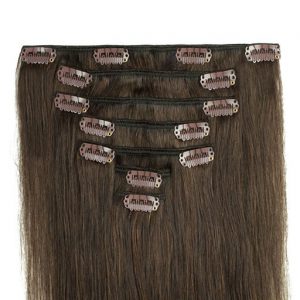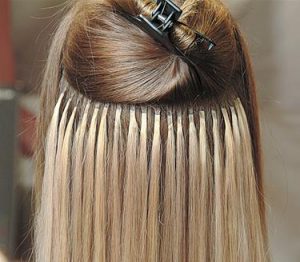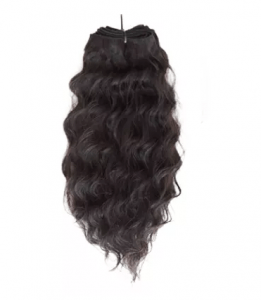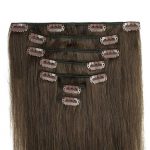
Hair Extension Comparison
Clip Ins
Are most suitable for special occasions or events when extensions can be removed before bedtime. However they can get ratty and worn-looking from frequent use and the quality varies widely. Choose real over synthetic as they’re more durable with washing and styling.
Budget
The cost for clip in extensions depends on the type of hair as well as the brand.
Pros:
- Greater versatility by having the option to put in and take out the hair on a daily basis.
- Non-commitment means you have the ability to change your hair color or style often.
- Hair can be taken in and out by the hair wearer
Cons:
- Clip in hair extensions cannot be worn by hair wearers for long periods of time and must be removed before bedtime.
- Not ideal for thin, fine hair as clips and base could be too bulky or heavy for the hair wearer.
- Unless used with proper care and maintenance, hair only lasts for a few months

Tape Ins
Tape ins are connected by wide bonds that look like two bits of Sellotape. Your own hair is placed between them and they are clamped around the strands. The wide, rather than skinny bonds, ensure they don’t look stringy and strand-y after a few washes.
Budget
The cost for tape in extensions depends on the type of hair as well as the brand.
Pros:
- Tape extensions are very light and are not bulky like other types of hair extensions can be, and easily go up into a high ponytail without being detectable.
- Tape-in hair extensions are made with real hair, so you won’t have to worry about damaging them with heat at all
Cons:
- You will have to spend longer on blow drying and/straightening if that’s something you do on a regular basis
- You’ll be limited to hair styles since the extensions can be kind of invasive

Fusion Bonds
Keratin U-tip bonds lined with silicone are attached to the hair using a heating element. Your hair is placed between the U-tip and sealed with a hot extension tool that melts the bond to your hair. The silicone lining of the U-tip creates a barrier to protect your natural hair. The bonds are attached close to the root, leaving some space to allow natural movement of your hair.
Budget:
The cost for strand by strand hair extensions depends on the brand, how many strands are added, and in which city they’re applied.
Pros:
- Most suitable for coarse, thick hair.
- Hair extensions can last up to six months with proper maintenance, making this type of application the most durable.
Cons:
- One of the timeliest methods of hair extensions, with a national average application time of around 6-8 hours, whereas experienced hairdressers can complete in 2-3 hours.
- Heat is required for an application, which can not only be tough on the stylist’s hands but can lead to damage to the client’s hair.
- Not reusable, although some companies can send the hair back, and certain manufacturers will reapply the glue.
- Application requires the use of a special tool used for clamping, and the constant squeezing motion is not ergonomic for the stylist.
- Wearers often complain of a headache several days after application. You may also experience discomfort or an itchy scalp within the first couple weeks after application.

Hair Weaving
Commonly known as a weave, sew-in or braided extensions are ideal for coarse, curly or thick hair. The client’s hair is braided to create a base for the extensions, and then the wefts are sewn into the braids using a needle and thread.
Budget:
The cost for sew in or braided extensions depends on the cost of the hair and stylist’s application fee.
Pros:
- Oil or silicone-based products may be used at the scalp as slipping will not occur unless the braids become loose.
- Most suitable for thick, coarse hair.
- No heat or glue is required for an application.
Cons:
- The application can take several hours.
- If the hair extensions are not washed regularly, bacteria can build up and cause infection.
- Extensions may be uncomfortable and cause headaches after an application.
- Limited hair styling options.
- Tight braids can cause tension or traction alopecia.


